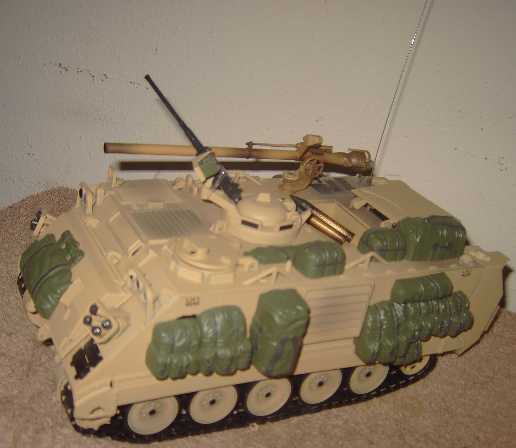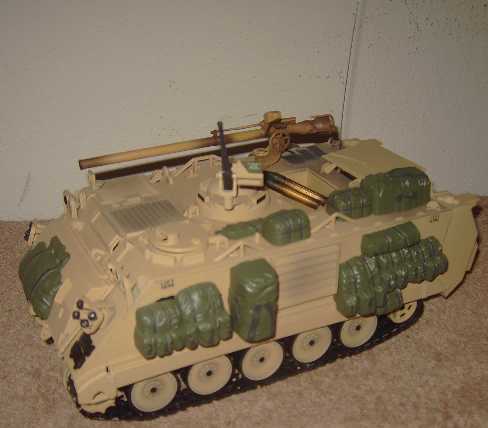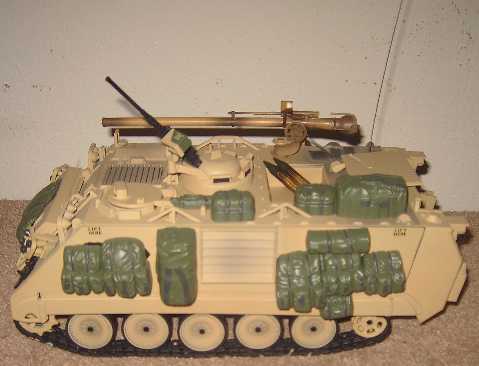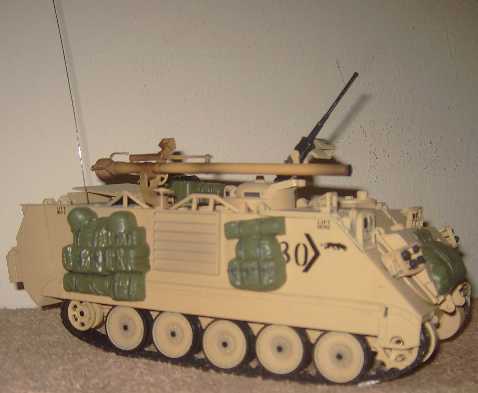Weapons Hatches
6/20/2007
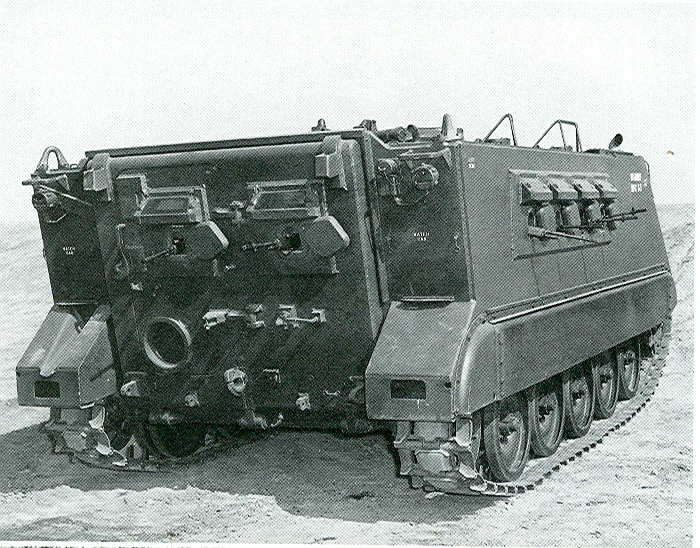
Click here to start
The Superb American AIFV upgrade has yet to be applied to the U.S. Army's fleet of M113 Gavins
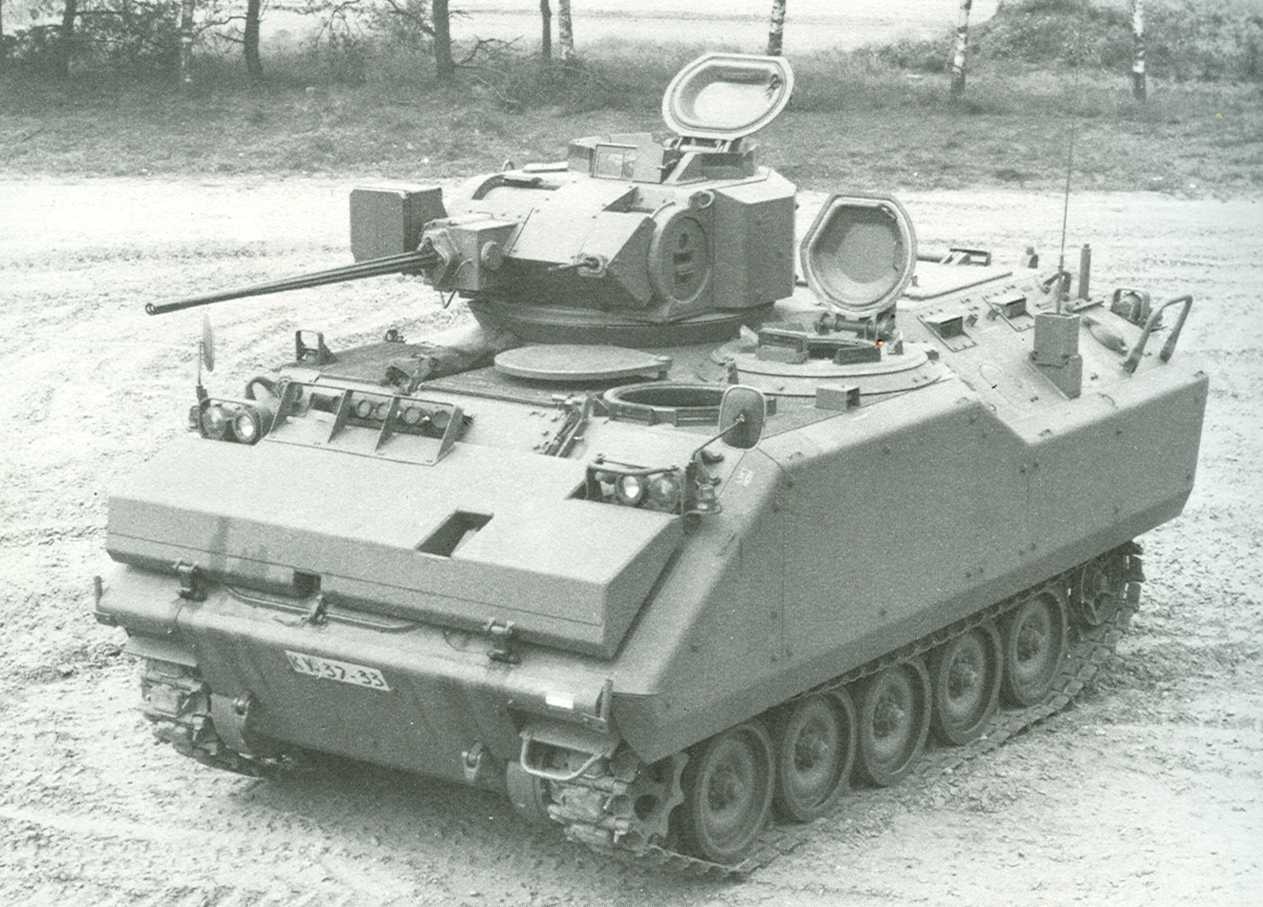
The revelation is that FIRING PORTS CAN WORK, and work well as the American made Armored Infantry Fighting Vehicle (AIFV) upper hull modification of the trusty M113 Gavin has been put into service and/or copied by indigenous M113 designers of Belgium, Holland, Italy, Portugal and recently Pakistan to name just a few.
Pakistani "Talha" M113 upgrade
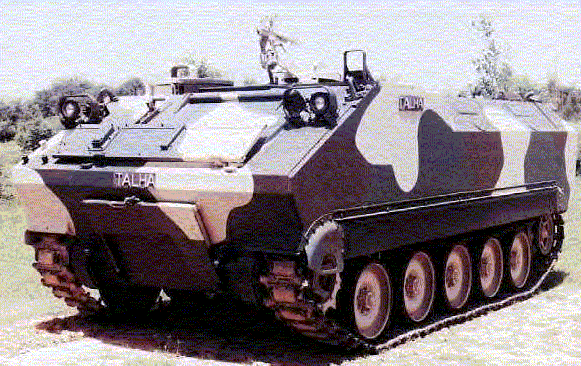
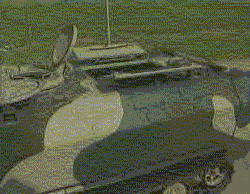
With today's embedded micro-cameras used in tanks like the Merkava 4 and Leopard 2, vision for infantry mounted inside a tracked armored fighting vehicle is almost as good as fighting with your head out unbuttoned--so if firing ports with just vision block periscopes could work in 1966, they could work even better today.
Furthermore, the "conventional wisdom" that firing ports can only be offered by radically altering the vehicle hull is simply not true---you can offer a "tail-gunner" firing port easily by changing the rear troop exit door and changing the top troop cargo hatch to one that has a "hump" for two standing Soldiers to have left and right facing firing ports. It would be VERY EASY to replace the rear troop exit door inside the rear ramp of the M113 Gavin and switch out the top cargo hatch with a new design cargo hatch with firing ports both with vision blocks/embed cameras, which our Weapons Hatches power points describe below on this web page:
ORIGINAL LOCATION:
www.reocities.com/armorhistory/weaponshatches.htm
The M113 Armored Porcupine CAPT. THOMAS P. KEHOE, INF."FIGHTING from their personnel carriers, the Infantrymen laid down a volume of fire heavy enough to impair the enemy's ability, or desire, to return effective fire as the task force advanced toward its objective against sporadic enemy resistance."
Was this incorrect or proper employment of armored personnel carriers? Today's commander of a mechanized Infantry unit would logically hesitate to use tactics such as those described above, but combat experience in World War II indicated that fighting from half-tracks was a role frequently assigned to, or assumed by, armored Infantry units.
Is today's armored personnel carrier so underarmed and outgunned as to be ineffective except as a means of transportation to the battle area; are we merely allowing our capabilities to be influenced by our current hardware?
Sure, the M113 has a .50-caliber [heavy] machine gun mounted at the cupola and has adequate periscopes for the driver and track commander to observe while "buttoned up". Certainly, one or two men can observe and fire from the opened cargo hatch, but what happens when the cargo hatch must be closed? And what about the rest of the squad?
Consider the individual rifleman, riding to battle in an armored personnel carrier. He cannot know where he has been, or what the ground looks like around him. Should his vehicle come under surprise fire, he cannot return that fire. When the ramp is lowered and his squad leader commands, "Let's go" he is inadequately oriented for an immediate fire fight. No wonder I commanders adhere to the cautious doctrine of dismounting at least two terrain features back. They fear any other choice!
While the success of our armored Infantry battalions in World War II was frequently spectacular, their half-tracks often were unable to operate satisfactorily over difficult terrain. Commanders recognized that greater cross-country mobility was needed-a mobility which would allow armored personnel carriers to keep pace with tanks. As a result a full-tracked personnel carrier,
Page 20
the M39, Armored Utility Vehicle (AUV), was designed, and saw limited service prior to the end of World War II and during the Korean conflict. But a serious drawback was noted early in the production of this vehicle-it lacked overhead armor. With the introduction of the VT fuse to the battlefield this consideration was of prime importance.
Our first full-tracked armored personnel carrier with overhead armor was the M44 Armored Utility Vehicle which carried 25 Soldiers plus a two-man crew. This vehicle was lightly armored and mounted .50-caliber machine gun which fired from its rear cupola, a .30-caliber [medium] machine gun, ball-mounted forward of the assistant driver's station, and another .30-caliber machine gun designed to be fired from one of four support brackets located at the top corners of the vehicle's side door frames. The M44 also had four observation ports mounted in each of its side walls from which personnel being transported could observe to their flanks. Although standardized, this vehicle was never produced in significant numbers. Late in 1945 the Army Ground Forces requested the development of an armored carrier capable of transporting 10 men in addition to its crew. From this requirement grew the M75 Armored Personnel Carrier.
The M75 was capable of transporting 12 men in addition to the driver. Protection for the M75 was furnished by all-round armor plate. It was armed with a .50-caliber machine gun mounted at the commander's cupola. Whereas the various models of half-tracks, the M39 AUV, and even the M44 AUV had afforded the transported squads a means of observing the terrain through which they were passing, as well as a limited fighting capability, the design of the M75 APC failed to provide these characteristics. Successor vehicles, the M59 APC and the M113/M113A1 APC, likewise failed to offer the squad a [buttoned-up] fighting capability or a means of observing the terrain through which they were passing, or in which they might have to fight.
It has now been 13 years since the standardization of the M75. These 13 years have seen the Army's inventory of armored personnel carriers reach new heights. Time has also caused many commanders of mechanized Infantry outfits to forget that we once fought from our armored personnel carriers when necessary. While Infantry doctrine tells us that "The mechanized rifle company may attack either mounted or dismounted. . . mounted operations include attacks against light or discontinuous enemy resistance and the exploitation of the success of other units or the effects of nuclear and chemical weapons; furthermore, they facilitate the expeditious employment of reserves to exploit success," the M113/M113A1 is not fully responsive to such opportunistic missions.
Today's M113 has performed admirably in Europe and in Vietnam. Indeed, it has covered itself with laurels wherever and whenever used. Our troops are confidant that the M113 will get them to their destination, but it's how they get there that counts! When they are confined inside this carrier, they are ineffective. Except for the driver, the track commander, and the air guard(s) no one knows much of what is going on around the vehicle. Further, no squad can fire a weapon from a position inside the vehicle. Men cannot be expected to fight effectively when they dismount into a tactical environment totally unfamiliar to them. Small wonder that commanders of mechanized infantry units hesitate to use this vehicle on fully mounted operations. Yes, our thinking has been influenced by our hardware!
Today's mechanized Infantrymen can neither see what is going on around their APCs nor fire their organic weapons from within the M113 troop compartments. We need not accept these "design limitations." Indeed, the XM701 Mechanized Infantry Combat Vehicle, an armored Infantry fighting vehicle now undergoing test, is provided with both firing and observation ports. So you
Page 21
see, we are analyzing once again the idea of giving the mechanized Infantryman this extra capability. Can this forward-thinking be applied to our current M113 APC? . Let's return two capabilities that were inherent in past APCs and which may also be provided with our future APCs.
This idea is not as "far fetched" as it might appear. "Design limitations" which have been accepted for too long a period of time, can be remedied. The capability of the M113 for mounted operations can be improved.
Soon after he arrived at Fort Benning, Georgia, Major General John Heintges, Commanding General, U.S. Army Infantry Center, expressed the belief that the combat effectiveness of the M113 APC could be increased by providing firing observation ports in its sides and rear. This item came up for further discussion at an Infantry Team meeting in late 1964.* It was then decided that the idea should be explored. At that meeting, Colonel Robert C. Williams, President of the U.S. Army Infantry Board, agreed to construct a full-scale mockup of the right half of the troop compartment of an M113 APC and to conduct experiments to determine whether members of a squad could deliver fire effectively from various types of firing/observation ports located in its side. Limited firing tests were conducted with this mockup mounted on a lowboy trailer.
Results of these tests were favorable enough for the Infantry Team to decide that additional tests of the concept should be conducted using an M113 APC modified with firing/observation ports. General Heintges then secured permission from General Frank Besson, Commanding General, U.S. Army Materiel Command, to make appropriate modifications to an M113 APC. He also arranged for the Infantry Board to conduct the additional testing as a military potential test. An M113 APC was delivered to Anniston Ordnance Depot where sections were cut out of its right and left sides. The vehicle was then returned to Fort Benning, where the Maintenance Section of the Infantry Center fabricated various panels for insertion into the cut-out areas. Later, Infantry Board personnel also removed the ramp of the M113 and installed a wooden ramp containing panels similar to those constructed for the sides. Each of these panels had one or more firing/observation ports of various configurations. The most suitable of these was composed of a covered, one-man firing port designed to accept the M14 [main battle] rifle, M14E2 automatic rifle, Ml6 [assault] rifle, M79 grenade launcher, and M60 [medium] machine gun. Directly above each port was a vision block through which Soldiers could observe. The covered firing port was opened only to engage targets. An M113 APC thus equipped would permit nine members of the squad (four on the right side, two in the rear, and three on the left side) to observe and fire from within the vehicle. While the right-side wall and ramp of the M113 APC were readily adaptable to these modifications, some minor adjustments had to be made on the left-side wall. [2005 EDITOR: FYI today's M113A3 Gavins have external fuel tanks so there is no fuel tank on the left today]
To position Soldiers more adequately within the M113, several different seating arrangements were examined. Of these, the most suitable was a composite arrangement in which two Soldiers seated themselves along each side, wall (standard location) on benches adjacent to the track commander's station. To observe or fire they merely rotated into a position from which they could I best see through their ports and employ their weapons. The jump seat was removed from its location and folding benches constructed in the center of the vehicle to accommodate six men, three on each side. This arrangement afforded good observation and fields-of-fire to the flanks and rear, most nearly conformed to the human engineering of the standard M113 APC, and afforded room on the center seats for two additional Soldiers.
_____________________________________________________________________
* The Infantry Team is the collective name applied to the U.S. Army Infantry School, U.S. Army Infantry Agency, and U.S. Army Infantry Board at Fort Benning, Georgia. The heads of these organizations and selected members of their staffs meet periodically to discuss and take action on matters of importance to the Infantry.
Page 22
A progression of firing exercises was conducted to determine whether members of the squad, using squad weapons and machine guns, could deliver effective fire from within the carrier. In the first phase of these exercises they attempted to identify any safety hazards, while acquainting the test Soldiers with the techniques of firing their weapons from within the vehicle. In this phase Soldiers experienced no difficulty in learning the techniques of firing from, and observing through, the firing/observation ports. The possibility of an excited Soldier withdrawing his weapon from the firing port and inadvertently discharging it within the vehicle was considered. While the consequences of such an incident might have to be accepted in combat, during testing a rod-like device was attached at a right angle to the muzzle of each weapon to prevent unintentional withdrawal.
The second phase consisted of series of firing exercises conducted while the carrier traveled over level terrain at speeds of 7 to 8 miles per hour. The gunners fired at a lateral array of silhouette targets at various ranges of 25 to 250 meters. Phase three was a series of firing exercises conducted with the vehicle moving cross-country, over rolling and rough terrain, at speeds of 5 to 25 miles per hour. The results of these last two phases indicated that:
1. Test Soldiers firing Ml4 rifles, M14E2 automatic rifles, and M60 machine guns, singly or in various combinations could deliver fire and hit targets through all types of firing/observation ports tested.
2. The effectiveness of fire, measured in terms of the number of target hits in proportion to the number of rounds fired, diminished as the range of the targets and the speed of the vehicle increased, as the terrain over which the test vehicle traveled became rougher, and as targets were positioned diagonally (as opposed to perpendicularly) to the test vehicle's route of advance or departure.
3. The fire effectiveness obtained with the M16 rifle in the limited firings I conducted was approximately equal to that obtained with the M14 rifle. Grenadiers firing the M79 grenade launcher were able to place approximately half their rounds within the target area (approximately 10 x 50 meters) when firing at ranges from 100 to 250 meters.
The final phase was conducted on a field firing range in which various pop-up type silhouette targets had been placed at ranges of 50 to 350 meters. This phase was included in testing primarily to confirm the suitability of the firing port/vision block configurations and the composite seating arrangement to the tactical employment of the vehicle. In this phase, test supervisory personnel confirmed that the firing port/vision block configurations and the composite seating arrangement were suitable and superior to all other port configurations or seating arrangements tested.
Two 30-mile, mounted, cross-country marches were conducted to determine if firing/observation ports increased the ability of Soldiers being transported in the modified M113 APC to maintain a sense of terrain orientation and to acquire targets. Data collected were compared with similar data acquired from standard M113 APC making the same two marches.
Since the standard vehicle had no firing/observation ports, and all doors and hatches were closed, the members of the squads riding in the standard APC were unable to maintain a sense of terrain orientation. As they dismounted from their vehicle they required several moments to accustom themselves to the daylight conditions and to acquire a sense of terrain orientation. The firing/observation ports in the modified M113 APC provided daylight within its troop compartment. The members of the squads maintained a
Page 23
sense of terrain orientation by observing through the firing/observation ports. In addition, they were able to pick out likely targets as the vehicle traveled. At the completion of the motor marches they immediately adjusted to the outside light conditions and to the terrain around them.
Target-acquisition exercises were also conducted wherein the ability of a fire team to pick up and engage targets while mounted in the modified APC was compared with a dismounted fire team's ability to acquire and engage the same surprise, targets. In this exercise, members of the dismounted fire team and, members of the mounted fire team acquired and fired at targets at approximately the same time.
From these exercises it was determined that firing/observation ports in the M113 APC substantially increased the ability of Soldiers being transported to maintain a sense of terrain orientation and to acquire surprise targets.
To determine whether provision of firing/observation ports and center seating, in the APC adversely affected the stowage capabilities of the vehicle, modified and unmodified M113s were loaded with troops, supplies, and equipment for three days of operations. While both the vehicles could accommodate such loading, the personnel compartment was quite crowded in each case. The crowding in the modified M113 was considerably greater than in the unmodified vehicle, due to the loss of stowage space along the side walls. [2005 Editor: today's M113 Gavins can employ external stowage racks and we need not lose internal volume by sloping the hull for firing ports because we can mount firing ports in the rear troop door and top cargo hatches. And of course we can and should stretch the M113 Gavin hull by 1 roadwheel into "MTVL" configuration to increase mobility by 50% as well as internal under-armor volume]
The amount of supplies carried in each M113 APC was then reduced to provide for one day's operation. Both vehicles were relatively uncrowded when so loaded. The Soldiers kept their prescribed "on individual" ammunition in pouches on their pistol belt and stored additional ammunition directly in front of them without undue crowding. While center seating did not contribute to the reduction in the stowage capability of the modified M113, it did limit the amount of leg room available to the Soldiers.
The troop and command acceptability of the firing/observation port concept was evaluated by soliciting the opinions of all 41 Soldiers who participated in the test, and by inviting members of the staff and faculty of the Infantry School who observed, rode in, and fired from the modified vehicle-to express their opinions as to the overall value of the concept. All personnel expressed favorable opinions as to the increased combat effectiveness that firing/observation ports would contribute to the M113/M113A1 APC.
From the Infantry Board's testing I am convinced that considerable merit is to be found in this concept of correcting "design limitations" of the M113. While all testing was conducted by firing through ports cut in wooden panels, and observing either through open ports or plexiglass vision blocks, Infantry Board personnel ascertained that actual ports could be fabricated with vision blocks that provide protection equal to the M113 aluminum armor, and firing ports could be sealed prior to the vehicle's water entry. Once sealed, the firing port's armored cover would also provide protection equal to the M113's aluminum armor.
Having discussed the advantages of modifying our standard M113/M113A1 vehicles, mention must be made that these modifications are not entirely without problem areas. So far I have spoken only in terms of a concept. Actual firing/observation ports have not yet been produced. Secondly, our Infantrymen have not been trained in how to fire from a moving vehicle, or what formations such vehicles should assume as a result, the training implications to this modification must be recognized. Finally, we must ask ourselves whether mechanized Infantry can accept a reduced stowage capability for our standard M113 APC. [2005 EDITOR: WOW! Mr. otherwise Open-Minded Infantry dude! Rethink. External stowage bins, c'mon now.] The logistical aspects of these modifications have yet to be explored. They must be the subject of further study.
Analysis of this project is continuing through various command channels. It is possible that in the near future we will have an M113 capable of permitting the Infantry to fight mounted, should it be required to do so.
(Reproduced by courtesy of the Editor, INFANTRY Magazine, Fort Benning, Georgia, U.S.A.).
Some Background: They Shoot Bad Guys, Don't They? U.S. Army Weapons Hatches
Mike Sparks writes:
My favorite scene in the movie, The Dirty Dozen is at the end when Lee Marvin--himself a WW2 combat veteran---and his men are trying to escape with a German half-track as they all face enemy armored cars and pour streams of submachine fire into them to blast their way through. Unfortunately, they lose some of their men who are firing exposed from the open-top half-track. Life is sometimes well represented by "art" as this was true in Vietnam which was raging when the movie was made (1967) as it is true today, whether you are "thunder running" to take a Baghdad with the 3rd Infantry Division and you are hosing swarms of enemy troops down with your .50 caliber "Ma Deuce" as Medal of Honor Winner, U.S. Army Combat Engineer, SFC Paul Smith did or in a convoy in Iraq during our current occupation. Had SFC Smith been properly equipped with a track commander's (TC) gunshield he might be living here among us today instead of a dead hero. Even though we started adding gunshields shortly after the Battle of Ap Bac in 1963, the message to have ALL vehicles armed and armored has still NOT been received by the garrison U.S. military mind which is not about warfighting but infighting for personal advancement. Simply put, American Soldiers and marines do not have their head-in-the-game until they are actually being shot at, where they realize that their buddies getting shot are not "John Cassavettes" but a real person who will never be alive again. So now gunshields that should have always been on our tracked combat vehicles in the first place are now being installed. The question is for how long will they remain installed once the war in Iraq is over and we can return to garrison BS full force? Fascinatingly, the fact that the Army attracts egomaniacs with no persuasive leadership or concern for the men or combat toughness and adaptability is also depicted in The Dirty Dozen by Major Reisman's fighting petty bureaucrats just to get his men trained, equipped and ready for their parachute raid behind enemy lines.
The Best Way to Fight Mounted?
One of the reasons in WW2, fighting from open-topped half-tracks was initially not seen as a problem, is because you could fire hand weapons from them Dirty Dozen-style. This is OK as long as the enemy is horizontal to you. However, war is not a gunslinger's "duel" where the enemy fights "fair" and right away in North Africa, the Germans began to drop mortars and air burst artillery upon our half tracks and M3 White scout cars shredding rubber tires and setting them on fire. One American General said he could see where his men were by the littered hulks of half tracks and scout cars across the desert. Fully enclosing enough volume to carry a 9-man infantry squad in a fully tracked armored fighting vehicle (TAFV) with steel at least thick enough to stop bullets (1/2 inch) has always been difficult and the U.S. Army lead the world when in 1953 it fielded the world's first fully enclosed TAFV, the M75 in combat in Korea. There has much chest beating by the USMC that it somehow "invented" helicopter Air Assaults by their small-scale troop movements by helicopters in Korea when the Germans actually had troop carrying helicopters in WW2 in action. I'm sure the Germans also had a fully enclosed tracked AFV in prototype form in WW2 as one of their "secret weapons" but it was the U.S. Army that created the first suitable mechanized infantry vehicle and fielded it in numbers in combat. Mechanized infantry has been at least as if not more important than heliborne infantry in the years since, so this Army triumph should get some press even if its only within our own ranks. In fact, our Air Assault, Light, and Airborne troops need their own air-transportable light tanks by replacing current Delta Weapons company vulnerable Humvee trucks with plentiful M113 Gavin tracks, but this is another problem and we are getting ahead of ourselves a bit. After the Korean war, General Gavin continued to press for a lighter TAFV than the M75 that would be more mobile, amphibious and air-transportable by parachute airdrop to fight non-linear post-nuclear exchange wars. With the advent of aluminum alloy armor, the M113 now called the Gavin was fielded in 1960. It was sent to Vietnam where it changed the way we think of mechanized infantry; with gunshields troops could fight mounted all the way to and even beyond the objective and not be limited to just dismounting short of the objective and fighting on foot. However, once mortars or artillery began to burst the troops inside had to button up top hatches and they could not fire hand weapons anymore.
PROBLEM: Soldiers exposed in open top cargo hatch of M113 Gavins; "Vanilla" M113s don't have ACAV gunshields or IDF-style Kasman shields
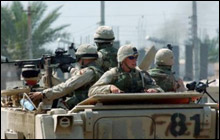
ACAV type gunshields
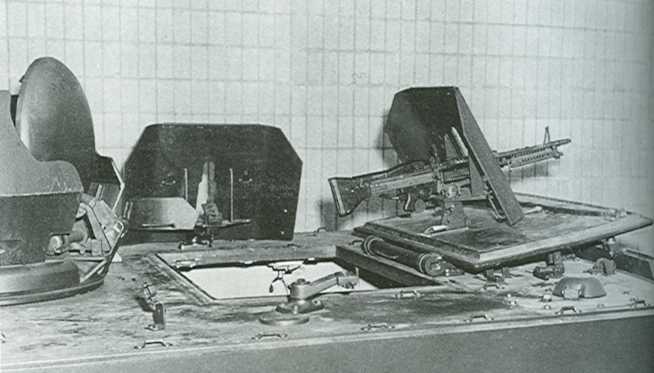
IDF Kasman fold-down fixed shields with clear vision ports


Now we can and we should modify the top cargo hatches of our M113 Gavins to stand upright like or even using the Bradley's top cargo hatch to provide rear protection as a defacto shield for troops back there providing 360 degree security. We should also create a FIXED TAGS type shield on the left/right that folds down or quickly detaches like the Israeli Kasman shields.
SOLUTION 1: Make cargo hatch stand in upright position for rear protection and provide side shields
Here are some photos of our 1:18 scale Motorworks M113A3 Gavin with ACAV side gunshields and the cargo hatch locked into a rear protective 90 degree position like can be done with the Bradley's top cargo hatch.
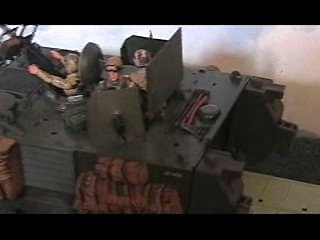
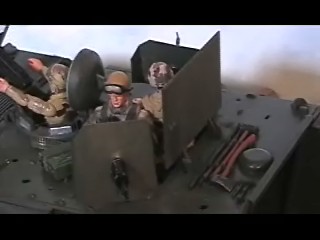
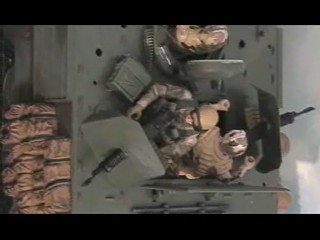
We have have since the 1960s thought about adding firing ports to the Gavin's hull which several of our NATO allies have done and actually added firing ports to the Bradley. The Russians stunned the world after The Dirty Dozen hit movie theaters with the BMP-1 "infantry fighting vehicle" which had not only a turret with a 73mm cannon and anti-tank guided missile (ATGM), but bristled with firing ports. The Army over-reacted with the XM723 BMP-clone oversized so strapping 6 foot 4 American farm boys could fit inside. Then came the 1973 Arab-Israeli War where the Egyptian and Syrian BMPs were incinerated by long-range Israeli tank main gunfire as their firing ports had no effect to the battle's outcome. Again, the Army over-reacted and placed an oversized 2-man 25mm autocannon/7.62mm medium machine gun/TOW ATGM turret on an already too large XM723 creating the medium-weight Bradley infantry and cavalry fighting vehicles we use today. Personal experience in long-range desert wars in Desert Storm later lead the Army to armor over the Bradley's side firing ports with armored skirts to stop autocannon fires but were not set off from the hull to pre-det RPGs because explosive reactive armor (ERA) tiles were expected. When the second Iraq war began, and the Army garrison mentality and cheapskate bureaucracy had not supplied ANY of the ERA tiles, so troops in Bradleys began to die from RPGs. 1-800-OBVIOUS. 2 years into Iraq, Soldiers in close range battle against insurgents with AKMs, RPGs and roadside bombs are now attaching gunshields just to get us to where we should have been all along had we not threw out everything that reminded us of Vietnam just because it made us feel bad. The IDF on the other hand, has simply gotten better and better as battle lessons are learned making better and better gun and side shields from watching us in Vietnam and from their own close combat experiences in Lebanon beginning in 1978.
NEWS: Picatinny employees recognized among Army's top 10 inventors for 2006; more proof that the M113 Gavin kicks ass in its adaptability and affordability....
Question is...should we adopt a "Non-Lethal" Platoon in an Engineer Cavalry Squadron with some of these or better type vehicles?
EM113A2 Gavin Rapid Entry Vehicle (Non-Lethal Crowd Control & Rescue Squad Insertion)
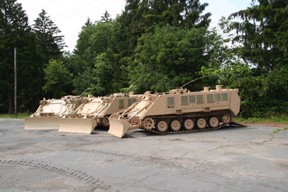
www.pica.army.mil/Voice/Voice2007/070511/070511%20inventions.htm
EM113A2 Rapid Entry Vehicle
The Enhanced M113 Rapid Entry Vehicle, Spiral 2, is a modified M113A2 Armored Personnel Carrier with bulldozer variant, which is lightly armored, full tracked and air transportable.
The purpose of this invention is to provide rapid-entry, non-lethal crowd-control and rescue-squad insertion capability into the center of detainee compounds during riots.
This will increase Soldier survivability by providing improved situational awareness and the ability to move and fire from within an armored vehicle.
Innovative features of the original REV include six Modular Crowd Control Munitions that can spray non-lethal rubber pellets into a crowd, a larger periscope for greater visibility, windows and Bradley firing ports modified for shotguns that fire non-lethal bullets.
The Spiral 2 version contains all these features as well as a bulldozer blade which provides the capability to breach detainee-constructed barricades.
The Spiral 2 also has a Bradley-style ventilation system that allows warfighters to fire the mounted shotguns within the vehicle with the hatches closed without worrying about a build up of fumes.
American TAFVs need firing port weapons but not from the hull
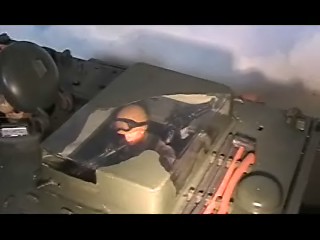
The point of all of this is to not REACT but be pro-active and adapt to the reality that in combat you might have to fight either at long or close range from both open and closed terrain types using both 2D and 3D maneuver; and that if the enemy can combine his arms and get explosive bursting munitions into the fight, our men in tracked AFVs will have to "button up" and fight on through. In WW2, we knew this might happen and actually had a "firing port" weapon, as did most other armies---its the bow-mounted machine gun in a ball mount in the hull of the M4 Sherman tank. As far back as WW2 professionals knew that those in a 360 degree swiveling turret could only see and fire upon the threats they were FACING at that time. With the armor thickest at the TAFV's front, sound tactics always face the vehicle front towards the greatest enemy threat. Since this was always going to happen, why not have a machine gun operated by an extra driver to mow down the enemies sure to come from that direction? As bad as the Sherman was at killing other enemy tanks due to its inadequate main cannon, the one thing it was good at was infantry fire support at close range (under 1000 meters), since it had a 5-man crew with a bow machine gunner and a 75mm gun suitable for blasting Japanese bunkers in the Pacific. The Russians to this day still wisely have two bow machine guns in their BMD family of air-droppable TAFVs for their Airborne.
Since money and time is short, we must create a firing port capability in our M113 Gavins but without cutting the hull up and getting in the way of adding additional armor layers to defeat roadside bombs and RPGs.
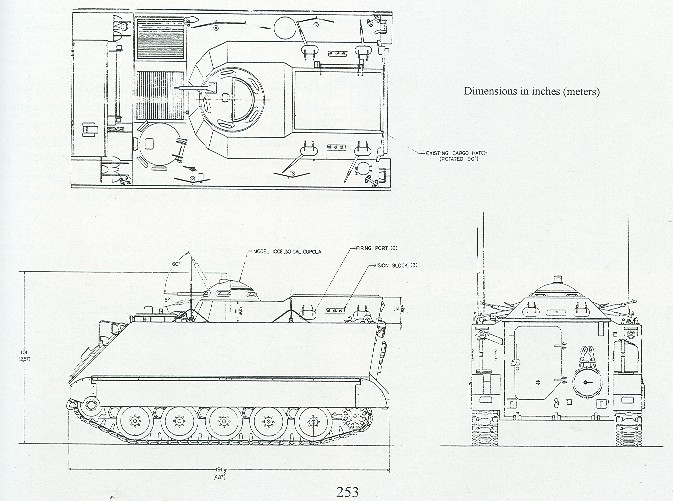
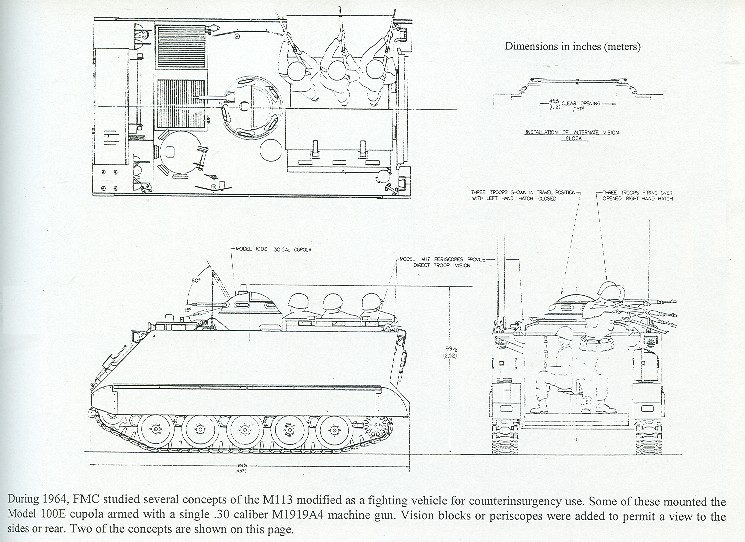
The way to do this ironically was considered by the Army in the 1960s but not acted upon as Hunnicutt shows in his brilliant book, Bradley: A History of American Fighting and Support Vehicles (see page 253 for inspiration)---use the M113 Gavin's hatches!
FIRING PORT SOLUTION #1: give the driver a firing port in his top hatch!
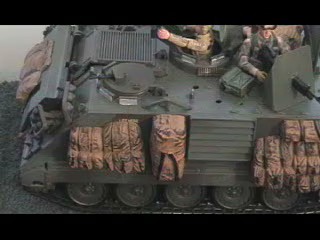
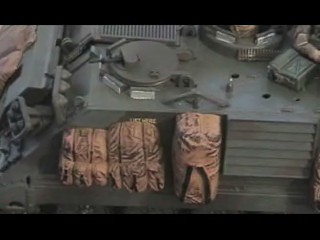
For the driver, to get a hull mounted "bow machine gun" capability we modify his top hatch so one of the thousands of M231 5.56mm firing port weapons we have is fitted inside with a C-MAG holding 100 rounds and a brass catcher, so he can fire it with his arm over his head like a WW1 Se5 fighter plane which had its machine guns on the top biplane wing so its bullets could clear the spinning propeller and not have to fire through the propeller and have a slower rate of fire. The leading allied aces in WW1 flew Se5s so this arrangement has to be deemed successful. With a driver's top hatch 5.56mm light machine gun wherever the nose of the Gavin is facing, suppressive fires can emanate and cut down any Saving Private Ryan wannabes.
If we use the Bradley cargo hatch or something similar in the back, its already got a bulge for those 6 foot 4 inch farm boys and vision pericopes. All we need is to add two firing ports for two standing infantrymen to fire M231s or if we use an open universal port captured enemy AKMs. Extra vent fans should be built into this modified cargo hatch for expelling weapons firing gases.
FIRING PORT SOLUTION #2: Use bulged cargo hatch with firing ports
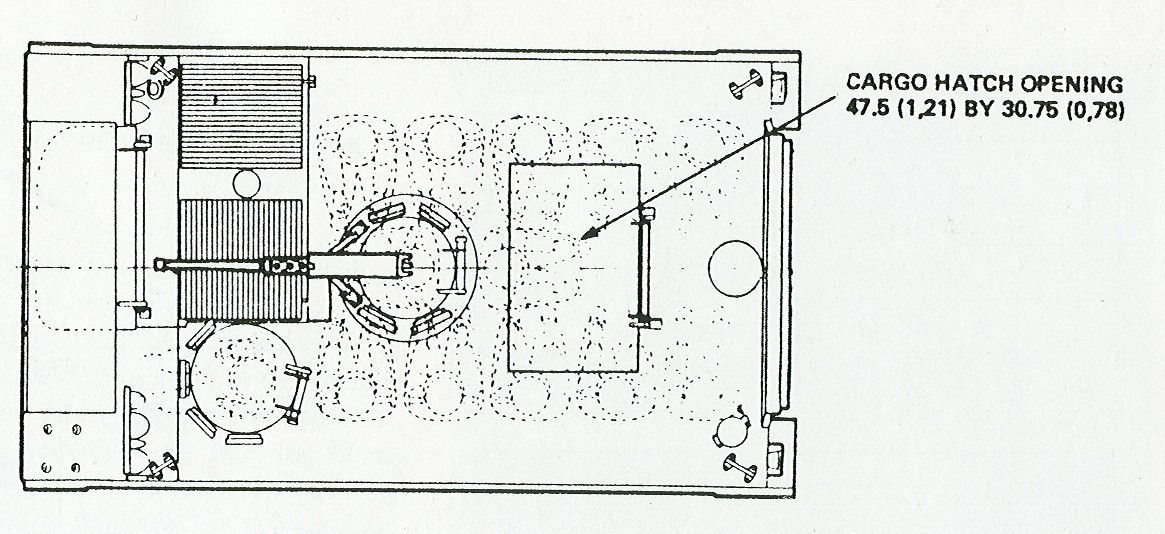
We created a see-thru cargo weapons hatch and placed two M231 FPWs inside to show the concept on our 1:18 scale Motorworks M113A3 Gavin model
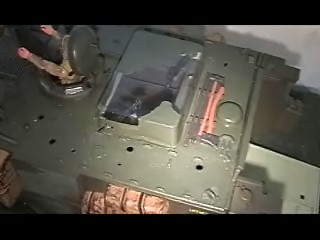
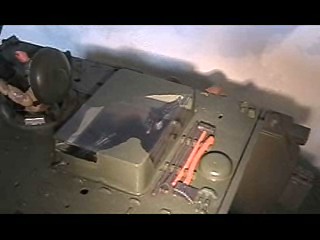
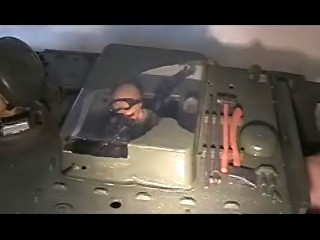
Here we have a scale figure manning one of the 5.56mm FPWs. If the firing ports are made so ANY weapons barrel can stick through, then even enemy weapons and ammo CAPTURED by a "Vulture" squad can be used improving 360 degree firepower and self-sustaining logistics
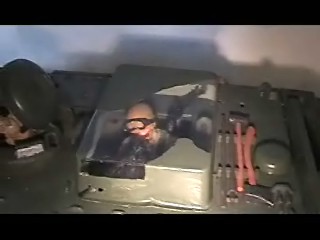
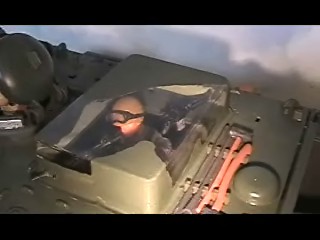
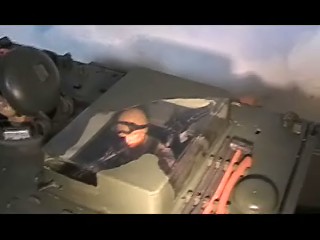
In the rear, the rear door should have the M901 Improved TOW vehicle (ITV) ballistic vision window added with a Bradley rear ramp M231 FPW socket ball as a firing port and relief tube. To prevent unauthorized access into the rear door, a CBP lock that only opens when designated Soldiers key in their security number on key ring touchpads will end this padlock-on-the-outside non-sense which killed some Stryker truck Soldiers when they overturned and drowned in a canal in Iraq.
3 Hatches Modified = 360 Degree Close Range Firepower without cutting a hull
There you have it--for a very low cost of changing 3 hatches with 3 improved ones with firing port weapons capabilities we have created a 360 degree buttoned up close combat capability for the M113 Gavin without sacrificing the preferred open hatch, behind gunshield mounted warfare capability. Adding a 1-man 20-30mm autocannon turret to the M113 Gavins our light infantry should have is important and finishes the job of creating an optimized light-medium infantry fighting vehicle that is still air-transportable for 3D maneuver. We could use this buttoned up mounted warfare capability when we go into "war mode" clearing Iraqi cities of rebels or if/when we fight another nation-state foe with artillery, mortars and when we reach operational objectives like city centers, WW2-style infantry teams with RPGs and AKMs. The time to correctly adapt our TAFVs to non-linear, close or far ranged battle is NOW not after we realize we need it.
Table of Contents |
Author: Sam Damon Jr.
Email: itsg@hotmail.com Home Page: www.reocities.com/armorhistory |
NEW! Giant 1:18 scale M113A3 Gavins @ Wal-Mart for $40....Radio Controlled versions $50

DESERT TAN

Yesterday we just found an exact same 1:18 scale TAN M113A3 Gavin that is RADIO-CONTROLLED for just $10 more!!
We found ours on the high top shelf at Wal-Mart and needed a ladder...
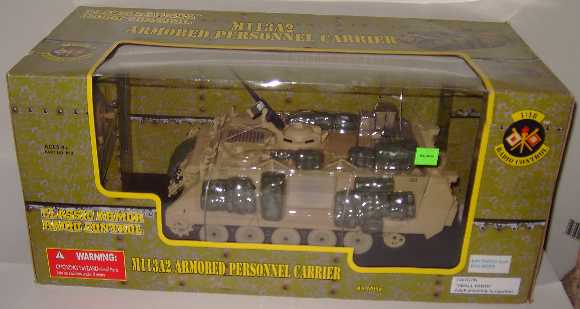
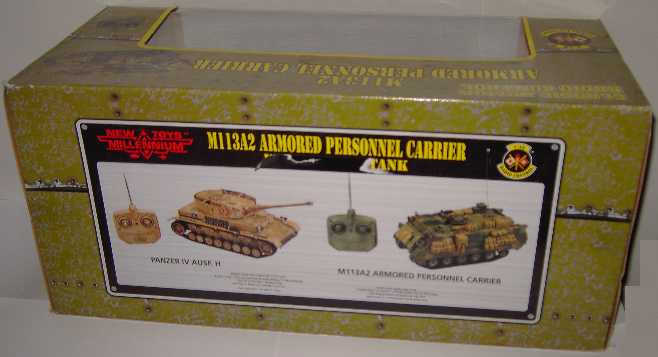
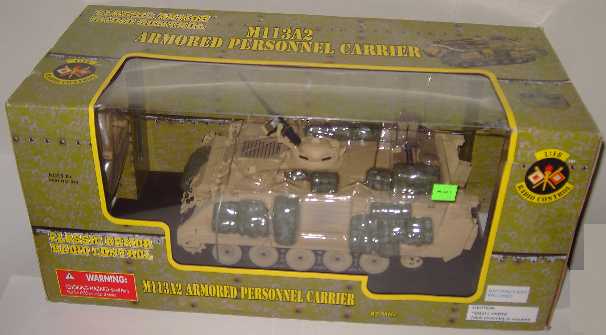
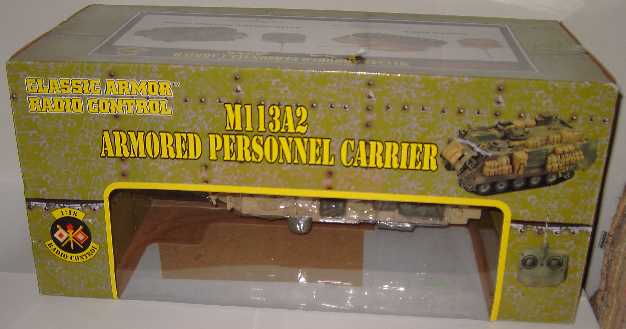
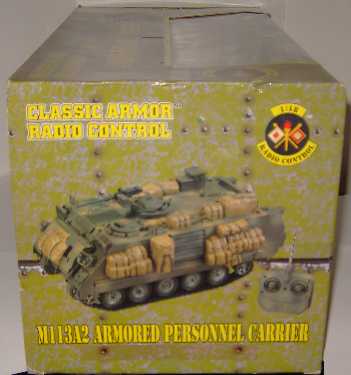
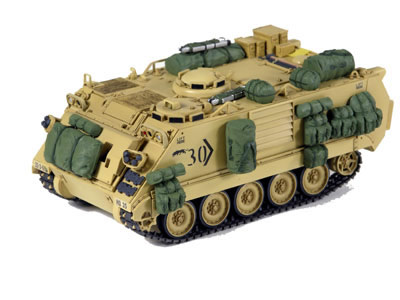
We took a 1:18 scale M401 106mm recoilless rifle from a BS BlueBox toys Humvee truck and placed it on a proper mount...a New Millenium Toys radio-controlled 1:18 scale M113A3 Gavin armored track...
Look Honey! I Shrunk the Gavin!
We need a Gavin reduced in width to roll on/off from inside an ISO container "BATTLEBOXtank" and a CH-47 but this is a tad bit too small even for our Chinook...
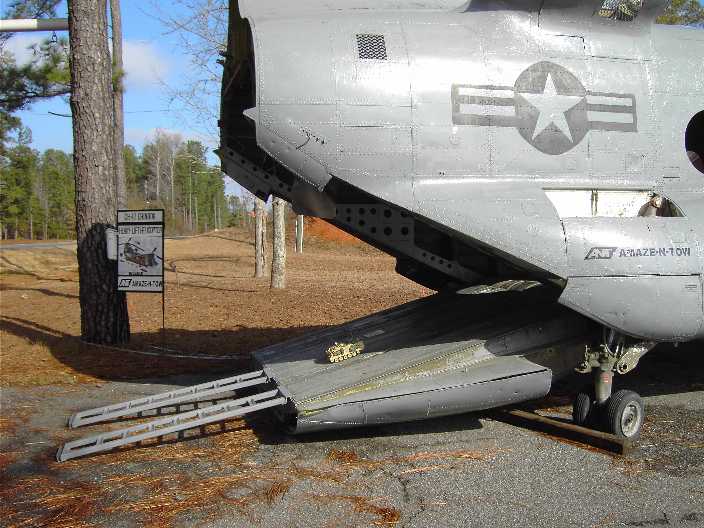
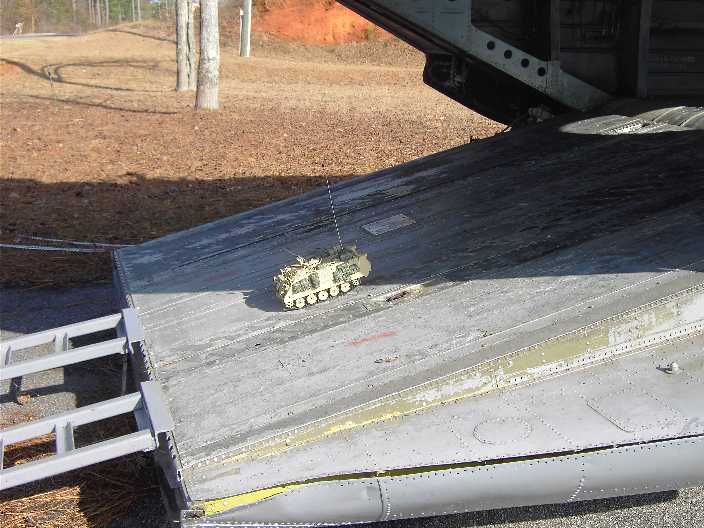
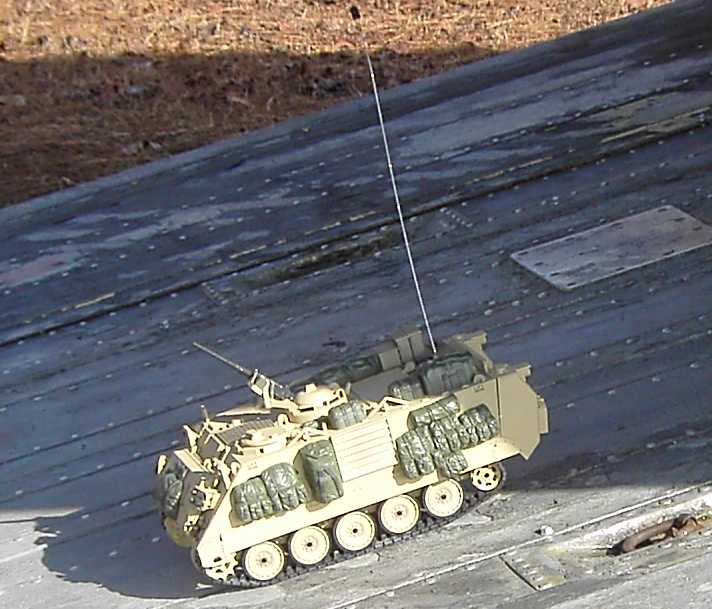
FEEDBACK!
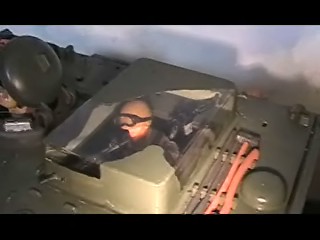
A British Army expert writes:
"Regardless of the actual detail of Capt. Keohoe article, which indicates a poor experimentation regime, if nothing else, the efficacy of gun ports flies in the face of reality and modern operational experience.
The issue isn't fantasy-firing ports. It's the CENTRELINE SEATING!
The UK did considerable experimentation to see if firing ports and centreline seating should be incorporated in the Warrior IFV.
It was determined that en-bussing and de-bussing increased by 80-200%.
The ability to recover, load and treat casualties was almost impossible.
The ability to overload disappeared.
The logistic re-supply load decreased to about nothing and loading and unloading increased considerably.
GO and LOOK AT THE Pictures OF ANY INETRNAL SPACE ON ANY CENTRE LINED APCS/IFV, like the "POS" BMP-1/2.
The UK solution was roof hatches, that allowed face to face seating but also allowed soldiers to engage targets from the standing supported position, which allow for far more accurate shooting than troops seated, because their legs and hips isolates them from vehicle movement."
1st TSG (A) REMINDER:
1. Good feedback, but we are NOT advocating centerline seating!
www.reocities.com/armorhistory/weaponshatches.htm [the web page you are on now]
Go to our weaponshatches web page and look the slides....NO SEATING CHANGES ARE BEING OFFERED JUST WEAPONS PORTS IN THE REAR DOOR AND TOP CARGO HATCH.
2. We want BOTH the ability to fight standing from open top cargo hatches AND the ability to fight standing when that top hatch is closed AND have a seated "tail gunner" on the end of the bench seat through the rear ramp door.
Please think about it some more.
Private Murphy's View

